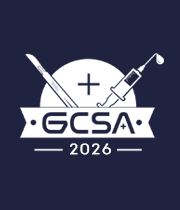Neuroanesthesia
- Neurosurgical Anesthesiology
The advent of anaesthetics was one of the most significant influences on the evolution of neurosurgery in the nineteenth century. The purpose of any neurosurgical anesthesia is to keep the central nervous system perfused and oxygenated while the surgery is being performed. The surgeon's physical manipulation (or mechanical manipulation by retraction), adverse venous drainage caused by the patient's positioning, sympathetic stimulation, intravascular fluid shifts, and variations in respiratory physiology all have an impact on cerebral blood flow (CBF) and, ultimately, tissue viability. The intricate balance between oxygen demand and delivery that occurs during anesthesia necessitates knowledge of the neurophysiologic effects of drugs used to maintain amnesia, immobility, and analgesia. The area of neuroanesthesiology is vast, with the primary goal of treating and caring for patients with neurologic disorders. The primary concern of neuroanesthesia is the regulation of brain volume and pressure, which can be accomplished by controlling respiratory pattern and CO2 blood gas tensions, administering diuretics, or administering hypertensive agents, all of which cause physiologic changes that are critical to the case's success. The other main issue is controlling blood loss, which can be controlled by the anesthesia used, blood pressure control, and ventilation. The final and most important responsibility is to safeguard nerve tissue.



Title : Spontaneous colonic perforation in a pediatric patient with acute febrile lllness: A case report
Abhiraj Yadav, Manipal College of Medical Sciences, Nepal
Title : Unusual cause of small bowel obstructions in infants: A warning letter to parents
Gamal Al Saied, Al-Azhar University, Egypt
Title : From panic to protocol: A ?IP on developing a paediatric breast referral pathway
Neriah Mangion, University Hospital Sussex NHS Foundation Trust , United Kingdom
Title : Improving scrotal examination in male patients presenting with acute abdominal pain: An audit and quality improvement intervention
Maab Elsaddig, University Hospital Lewisham, United Kingdom
Title : Mapping pediatric general surgery training in low and middle income countries: A scoping review
Habba Mahal, University of Alberta, Canada
Title : Improving implementation of enhanced recovery after cesarean section protocol in resource limited setting of Koidu Government Hospital Sierra Leone 2024/25. A quality improvement project from evidence to reality
Hailemariam Getachew, PIH, Sierra Leone